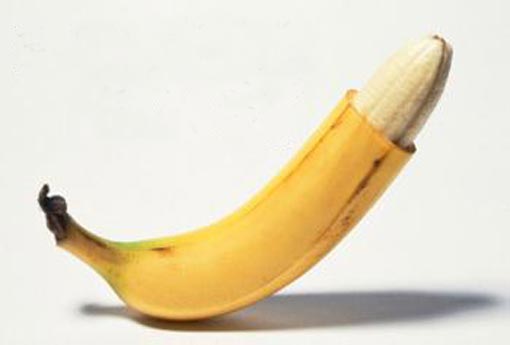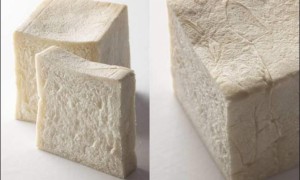Basic Information
Chinese name: penis
Foreign name: penis;tentum;priapus;phallus
Properties: Human Organs
Location: Suspended by a ligament anterior and inferior to the pubic symphysis
Morphological characteristics
From the perspective of appearance, the penis is a long conical or long cylindrical shape with varying thickness, and has two states of relaxation and erection. The shape of the penis of different animals is different, especially the glans part is very different. The penis of a horse is thicker and cylindrical with slightly flattened sides; the penis of cattle and sheep is thinner, forming an "S" shape behind the scrotum; the penis of a pig is also thin, forming an "S" shape in front of the scrotum.
Many marsupials, except for the two largest kangaroos, have a bifurcated penis (that is, two columns at the end of the penis).
The penis can be divided into three parts: the glans penis at the front, the body at the middle, and the root at the back.
penis head
The glans penis is the enlarged part of the front end of the penis, commonly known as the "glans", and its shape varies with different animal species. The glans of cattle are pointed and slightly twisted. The glans of the horse is blunt and round, with a glans crown formed on the periphery, and a urethral process (2.5cm) in the glans socket. The glans of pigs are spiral-shaped with a shallow spiral groove. The glans of sheep has a cap-like protuberance, with a urethral process extending into the front of the glans (sheep is curved and slender, and goats are thick and straight). . The glans of tigers and cats have keratinized papillae.
penis body
The middle part of the penis is the body of the penis, which is cylindrical, with ligaments suspended from the front and lower part of the pubic symphysis, which is the movable part.
The penis body of the elephant is cylindrical, thinner and longer, about 90cm, located under the abdominal wall, starting from the ischial arch and extending forward to the umbilicus through between the left and right thighs. The penis body of the tiger is long cylindrical, about 18cm long and 1.5~2.5cm in diameter, gray-brown and opaque. The glans is conical with a rounded top and small papillae or sand-like small barbs in the middle and lower part, which are rough to the touch. There is a foreskin or foreskin turned up outside the glans, a short penis bone inside, and the urethral opening is ya-shaped.
The bovine penis is prolate cylindrical, thick at the base, acuminate at the apex, 30~70cm long, 1.5~2cm in diameter, brown or light brown, and translucent. The glans head is long and conical in shape, with barbs that are cut with scissors or wrapped with thin skin with barb-like protrusions on the surface of the ox tongue. Outside the glans with or without foreskin, no testicles, no penile bone. The top of the glans is cut into a trident.
The body of the penis is composed of the corpus cavernosum and the corpus urethra, and is rich in blood vessels, nerves, and lymphatic vessels.
Erectile tissue and erection: The erectile tissue is mainly a pair of corpus cavernosum, which is covered with thick fibrous tissue on the back of the corpus cavernosum of the urethra. The corpus cavernosum is composed of many small canals of fibrous tissue, and the trabeculae are divided into many gaps, which are actually venous sinuses formed by the expansion of capillaries. When the erection is excited, a large amount of blood is injected into the cavernous vessels, and the volume increases. The retraction is due to the release of the ischiocavernosus muscle on the dorsal vein of the penis, allowing blood to flow back.
penis root
The back end of the penis is the root of the penis, which is hidden in the deep surface of the scrotum and perineal skin, and is fixed to the inferior pubic and ischial ramus, which is the fixed part.
The root of the penis is the starting point of the penis.
Penis peduncle - divided into two penis peduncles starting from the base of the penis, fixed on both sides of the pubic arch.
penis foreskin
The skin of the penis is thin, soft, and stretchable, with no fatty tissue under the skin. The skin is closely attached to the deep layer at the head and neck, and the rest of the skin is loose and easy to free. The skin of the penis is folded forward and free from the neck to form a double-layered annular skin fold that encloses the head of the penis, called the prepuce of penis. . The front end of the foreskin forms the foreskin opening, on the ventral midline of the head of the penis, and is connected to the skin fold between the lower end of the external urethra and the foreskin, called the frenulum of prepuce.
The function of the foreskin of the penis is to accommodate and protect the glans.
The foreskin is a double sheath, divided into an inner foreskin and an outer foreskin. The foreskin of cows is longer and has foreskin fur; the foreskin cavity of pigs is very long, with foreskin diverticulum, which is easy to hide dirt.
The main function
The penis is the main organ of sexual behavior and its main functions are urination, intercourse and ejaculation.
sexual intercourse
Sex / sexual intercourse / coition generally refers to the mating behavior between male and female animals of the opposite sex, which requires the participation, stimulation and excitement of reproductive organs. From a biological point of view, the purpose of sexual intercourse is reproduction.
Sexual intercourse refers to the act of a man inserting his penis into a woman's vagina and producing ejaculation due to excitement to deliver sperm. During sexual intercourse, the penis of men should be erect, and the vaginal lubrication of women makes it easier to insert the penis into the vagina.
urination
Urine (micturition) is the process in which urine is temporarily stored in the bladder through the ureter after the kidney is formed, and after a certain amount is stored, it is excreted through the urethra at one time. Urinating is a complex reflex activity controlled by the central nervous system.
The penis is the outlet for male animals to urinate.
ejaculate
Ejaculation is the reflex action of male animals to eject semen during sex. In humans, ejaculation ejaculates through a series of coordinated actions of various parts of the reproductive system that eject semen from the penis. Including the two-step spinal reflex, the primary center is in the lumbosacral spinal cord, and its sensory impulses are afferent from the tactile receptors on the glans of the penis.
Ejaculation is a complex process that includes erection, ejaculation, ejaculation, and orgasm. The erection is due to the swelling and hardening of the penis, and its primary innervation comes from the sacral plexus and the splanchnic or erectile nerves of the pelvis. Ejaculation involves collecting semen before ejaculation and transporting it to the prostatic portion of the urethra, which becomes a semen reservoir with the closure of the bladder neck and distal urethral sphincter. this induces ejaculation, the rhythmic ejaculation of semen through the urethra, in which the involvement of the skeletal muscles of the perineum is essential.
developmental evolution
developmental principles
After men enter puberty, Leydig cells begin to produce a large amount of testosterone, which is male hormone. This male hormone can promote the appearance of secondary characteristics in men. At this time, some people begin to grow beards, develop Adam’s apple, change their voice, and get erections every morning. , the penis quickly became larger and thicker. These typical male characteristics are all produced under the action of testosterone, but if the testicles enter the recession period in advance due to excessive drinking, excessive sex, masturbation, and irregular life, think about it, if the testicles are aging, they cannot secrete enough If the nutrients for penis growth and development are not adequately supplied, the penis will stop growing. Therefore, men who have secondary characteristics and want to develop secondarily must start with maintaining the testicles. Quickly activate the testicular aging cells to secrete a large amount of the male hormones and hormones needed by the testis, so that each cell can be fed and drunk, which can stimulate the division and growth of the cavernous body of the penis. The overall increase and thickening are the same as in adolescence.
The penis is like a surprising natural hydraulic mechanism, and the physiological response of erection and subsidence is expressed as the hemodynamic changes of the inflow and outflow of an organ under a certain volume. Depending on the amount of testosterone, the blood volume during an erection will increase by about 80-200 ml than usual. When the testosterone content increases, the brain or spinal nerve center transmits the message of erection, and the "erectin" acts on the corpus cavernosum of the penis, causing the arteries to dilate, blood pressure to rise, and about 200 ml of blood enter the corpus cavernosum of the penis cavity. A persistent erection is formed. Just like how a sponge expands after absorbing water. The volume of blood that the penis cavity can hold in the cavernous cavity determines the size of an erection. So, by increasing the blood volume of the cavernous corpus cavernosum, an increase in penis size can be achieved, which is how testosterone works!
Causes of erections
Remember, the "igniter" that fires a man's penis isn't between his legs, it's in his head.
The brain is the largest organ in the human body. After the brain feels sexual stimulation, it sends out nerve impulses to the spinal cord, which then triggers the erection of the penis. Any disease or psychological factor that prevents or interferes with the brain's "fire" command can lead to erectile dysfunction.
developmental process
penis human penis originally prickly
The human penis, compared with its ape relatives, appears to have transcended purely functional needs, and its extra-large size appears to act as a signal. A gorilla's erect penis is only 3.18 cm long, an orangutan's is only 3.41 cm long, and a human's is 12.7 cm long, even though the males of both apes are much taller than men. Just like chimpanzees, cats and mice, male human genitalia originally had spines, but the related genes disappeared in the process of evolution, but there are still some primates that retain this gene.
A team of researchers from Stanford, Georgia and the University of Pennsylvania tracked the evolution of human genes. They compared human genes with those of chimpanzees and cynomolgus monkeys and filtered out 510 genes that humans originally had but lost during evolution. The primate relatives of humans are still preserved. Of greatest interest to researchers are the male spines, which are found in many mammals and whose function is inconclusive and may have different roles in different animals. These roles are positive, including those that enhance mating. pleasure, or to promote ovulation, but it can also cause harm to females. But when it comes to mating time, compared to many other mammals, a large penis at least allows humans to switch positions during sex. However, the male orangutan's only 3.81 cm long penis is enough to make it a variety of mating positions, which is comparable to that of humans, and they can even hang from a tree to perform the above tricks. If long, large penises have the potential to prolong sexual intercourse, orangutans outperform humans at this point too (15 minutes on average, compared to 4 minutes for American men).
Researchers believe that male human penile spines have regressed, changing courtship patterns in humans. Without this weapon, the stimulation of mating is reduced and the time is prolonged, which helps to strengthen the duality, that is, the fixed spouse relationship. The monogamous marriage relationship of human beings is developed on this basis, and the duality of other species is developed. Relationships are not as long and stable as humans.
differentiation and development
The differentiation and development of the penis is divided into four stages:
1. 10-12 weeks of pregnancy
The penis has just been differentiated and is only 3.5 mm long. At this time, it is the testosterone produced under the action of hCG secreted by the placenta.
2. The middle and late 6 months of pregnancy
The penis grows very fast, reaching 2.5-3.5 cm at birth, when the fetal pituitary begins to secrete the gonadotropins LH and FSH.
3. After birth to before puberty (about 7 years old)
The penis grows slowly because the hypothalamus and pituitary gland develop slowly and testosterone levels are low.
4. After puberty begins
The pituitary gland and testosterone secrete vigorously, and the penis grows rapidly, reaching the adult level in only about 5 years, and the growth and thickness increase. When the level of sex hormones in old age is significantly reduced or after surgical castration, the penis can degenerate secondary. If secondary impotence stops sexual contact for many years, it may also cause pathological degeneration. This is not a general problem of use and disuse, but the consequence of degenerative changes in smooth muscle fibers.
In short, the differentiation and development of the penis depends entirely on the level of testosterone in the body. If the secretion of testosterone is insufficient during the 6th to 9th month of pregnancy, the penis develops at a lower rate than normal, and the penis is small at birth.
organ structure
The penis is the mating organ of male animals. It consists of three parallel long columnar corpora cavernosa. The upper two corpus cavernosums are called corpus cavernosums, and the lower one is called urethral corpus cavernosum. The outside of each corpus cavernosum is covered with a thick and dense fibrous membrane, called the tunica albuginea of the corpus cavernosum and the tunica albuginea of the urethra, respectively. The interior of the corpus cavernosum consists of many trabeculae and cavities, which are sinus spaces that communicate with blood vessels. When the cavity is congested, the penis becomes thick and hard and erect. The superficial and deep penile fascia and skin are encased together by the three corpora cavernosa.
Most placental mammals, including our closest relatives, the chimpanzees and gorillas, have a penis bone.
corpus cavernosum
The cavernous body of penis is a cylinder with thin ends, one on the left and one on the back of the penis. The left and right are tightly combined, extending forward, and the tip is tapered, embedded in the depression behind the glans penis. The rear end of the corpus cavernosum is separated from the left and right, called the peduncle, and is attached to the inferior pubic and ischial rami on both sides, respectively.
urethral corpus cavernosum
The cavernous body of the urethra is located on the ventral side of the corpus cavernosum, and the urethra runs through its entire length. The middle is cylindrical, the front end is enlarged as the glans penis, and the rear end is called the bulbofurethra, which is located between the two peduncles and is fixed below the urogenital diaphragm.
penis bone
The baculum refers to the bones in the penis of some mammals, which are shaped bones that are not connected to other bones in the body. Primarily rod-shaped, it is usually hidden in the belly of the animal and is pushed into the fleshy part of the penis by a set of muscles when needed. This bone is prepared for mating. With it, the initiative and reaction speed of penis erection are greatly increased. In the cruel competition of fleeting mating opportunities, owning this equipment will undoubtedly be a huge advantage. An erection without a penis bone is entirely dependent on congestion.
Primitive unicellular and marsupial mammals did not have a penis bone. Most placental mammals have a penis bone (baculum, penis bone), but few do not have a penis bone. Placental mammals without a penis bone include elephants, rhinos, horses, donkeys, rabbits, hyenas, whales and dolphins.
The vast majority of primates have penis bones, including our closest relatives, the chimpanzees and gorillas. Humans, however, are different in this regard. The researchers believe that this may be due to the special relationship between human beings, such as relatively fixed partners, affection between partners, frequent mating, and inconspicuous estrus in females.
The penis bone can prolong the period of intercourse in many species, often contributing to genital mating (locking).
A species of night monkey (Nycticebus boneanus) has a 16 mm long penis bone (weight 0.7 kg); Macacus (Macacus) has a 11 mm long penis bone (weight 7.2 kg); Gorilla (Gorilla gorilla) has a 12 mm long penile bone (weight 142 kg) kg), evolutionarily changing very little compared to body weight.
size effect
The scientific way to measure penis length should be from the pubic bone to the glans.
There are two methods commonly used by penis doctors:
The first is the measurement of the length of the non-erect penis: the room temperature is 18 ℃, take an upright posture, lift the penis at 90° to the body, and measure the length from the pubic symphysis above the penis to the top of the penis head with a ruler.
The second is the measurement of the length of the erect penis: take an upright position, pinch the head of the penis with your hands and pull it forward, until it cannot be extended, use a ruler to measure the length of the pubic symphysis to the head of the penis (the length after pulling is the same as the length of the erection) basically the same length).
The International Men's Health Organization (MTD) has obtained the formula for calculating whether the penis size is normal through nearly 30 years of research (Asia):
Normal penis length M=(Height T-105)*0.618/3.14 (cm) Normal penis diameter D=M/3.14 (cm) (Europe=Asia/1.414/0.618) cm
The above formula is only calculated based on most statistics, and actual data proves that there is no relationship between penis length and height. Penis size is closely related to race and genetics.
Animal penis size is related to the geographical environment in which it lives
A study of animals around the world has shown that the size of the penis of male mammals is related to the geographical environment in which they live. Male animals living in cold regions have larger penises in order to complete mating more smoothly and facilitate reproduction.
Steven Ferguson from the Winnipeg Freshwater Research Institute in Canada, and Sage Larryville from the Delta Shorebird Foundation both said that a large organ is directly related to the geographical environment in which the animal lives. Animals living in warm climates, males in higher latitudes are more beneficial to have a larger penis.
The researchers collected data on penis bone size from 122 mammal species from around the world, and then they looked at whether the size of the animals' penises was related to factors such as temperature and latitude in the regions where they lived.
Those living in the polar regions have relatively long penile bones compared with animals living in the tropics, the authors say in a study published in the journal Oikos. The researchers say the difference may be due to the different mating styles of animals in different climate zones.
For example, elephant trunk seals, which live in more comfortable lower latitudes, prefer to live in groups. Males fight over mates, and the victors often have "wives and concubines." This type of mating results in the inheritance of traits of larger-bodied individuals so that offspring males can gain a physical advantage in the fight for mates. These seals weigh up to 2,300 kilograms, but their penises are relatively small compared to other animals of similar size.
But the walrus, which lives in the Arctic and weighs about 1,700 kilograms, has one of the longest penises in mammals with a 60-centimeter penis bone. The environment in the Arctic is harsh, and the number of animals living here is very small, so Arctic walruses have little chance of frequent contact with their own kind. This means that the walruses have very little mating activity and that males rarely fight for mates. So walruses must seize the rarer opportunity to mate, and in order to successfully fertilize the mating partner and continue the evolution of the species, male walruses eventually evolved larger organs, Ferguson said.
Ferguson says a longer penis ensures that the male's sperm is delivered closer to the female's egg. A male with a long penis has a higher chance of becoming a father, "because their sperm is more likely to fuse with a female's egg," says Matthew Gage, an expert on gender competition at the University of East Anglia in the United Kingdom.
The size of the human penis is related to ethnicity, race, etc.
There are many differences in the size of the penis, which are related to ethnicity, race, etc. Many factors may affect the size of the penis, including excessive body fat, cold weather, and stressful situations. Different lengths and thicknesses are normal physiological phenomena. The length of the penis has nothing to do with men's sexual ability, nor is it an element that affects women's sexual pleasure. It is generally believed that male penis length greater than 5CM can exercise normal sexual function. The normal penis length ranges from 4.5-8.6 cm.
The penis size of western white races will be larger than that of Asian races. According to statistics, the penis length of white Americans ranges from 7.5 cm to 11 cm when flaccid and 10 cm to 18 cm when erect. It is normal for Asians to have an erection of 7 cm to 16 cm.
Chinese men (18-45 years old) have a penis length (non-erect) of 4.5-8.8 cm, with an average of 6.5 cm, an average transverse diameter of 2.5 cm, and an average circumference of 8 cm in the middle of the penis. Shi Chengli in China has measured the penis size of 1412 healthy young men in China and the erection length of 126 healthy men. The results show that the longest penis is 14.5cm, the shortest is 4cm, the maximum circumference is 12cm, the minimum is 4.5cm, the longest penis is 16cm, the shortest is 9cm, and the average is 12cm; . The penis lengths of 1000 normal adult men investigated by Liu Guozhen and others are as follows: the normal length ranges from 4.9 to 8.6 cm, the average is 6.55 cm, the longest is 11.6 cm, and the shortest is 3.7 cm.
Expert-researched sizing reports
People's concern about penis size naturally leads to many scientific studies. This kind of research is nothing more than scientific measurement according to certain procedures. This measurement is usually difficult to carry out in large-scale populations, and the conclusions drawn are often lack of authority and accuracy. persuasive. Fortunately, a method called systems analysis can fill this gap.
The method of systematic analysis is to search the research literature published in peer-reviewed scientific journals as comprehensively as possible according to a certain topic, and then select the research reports that meet certain standards through screening, and then synthesize the results through statistical processing to obtain more studies. sample research results to help obtain more reliable research conclusions.
A new issue of the British Journal of Urology published a systematic analysis of the size of the human penis, through the analysis of 17 studies, including 15,521 people's penis size measured by medical professionals according to certain protocols. , gives data on the "normal" size of the male penis: the average length in the flaccid state is 9.16 cm and the circumference is 9.31 cm; the length in the soft state after maximum stretch is 13.24 cm; the average length in the erect state is 13.12 cm, The circumference is 11.66 cm.








